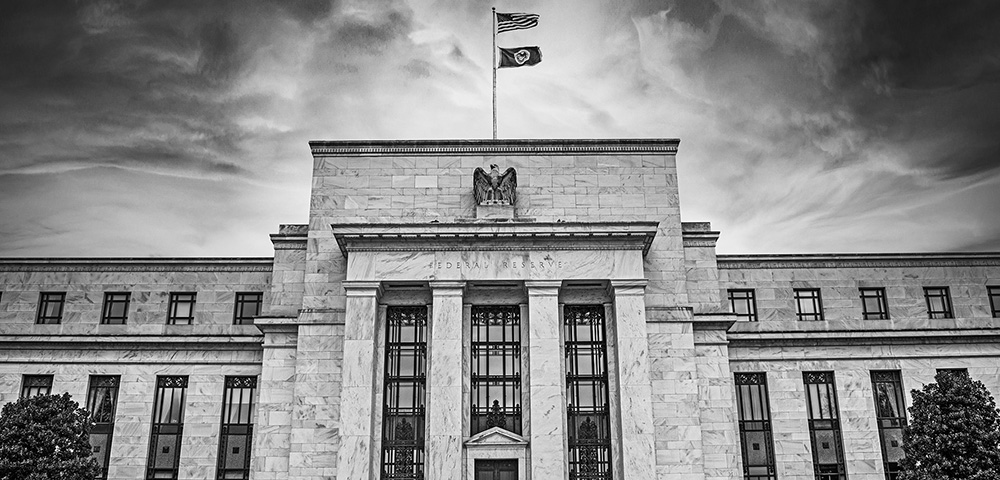Key Questions: Cracks in the Foundation: Symbolic or Systemic? Fed Unity Frays as Policy Dissonance Grows.

The Key Wealth Institute is a team of highly experienced professionals representing various disciplines within wealth management who are dedicated to delivering timely insights and practical advice. From strategies designed to better manage your wealth, to guidance to help you better understand the world impacting your wealth, Key Wealth Institute provides proactive insights needed to navigate your financial journey.
The Federal Reserve, long viewed as a model of institutional unity and message discipline, is beginning to fracture. Not over minor mechanics, but fundamental questions over policy direction.
The Dissent: Cuts and QT
At the July 30–31 Federal Open Market Committee meeting, two of the Fed’s most prominent governors — Michelle Bowman and Christopher Waller — dissented from the majority in a rare and revealing split. They opposed the decision to hold interest rates steady, instead calling for an immediate 0.25% rate cut.
Labor Cracks Prompt Action
This marked the first double dissent by Fed governors since 1993 and it wasn’t merely symbolic. Both Bowman and Waller pointed to emerging cracks in the labor market, including weaker job creation and wage growth. With inflation tending lower and employment momentum fading, they argued that the Fed risks being too restrictive by holding rates steady.
Philosophical Divide Over Policy
While their dissent at the July meeting focused solely on interest rates, the broader philosophical divide seemingly runs deeper. Earlier this year, Waller publicly opposed the Fed’s decision to slow the pace of quantitative tightening, arguing that liquidity conditions did not yet warrant a shift. Quantitative Tightening, or QT, is the process by which the Fed reduces the size of its balance sheet by letting bonds it holds mature without buying new ones. In simple terms, it’s one way the Fed pulls money out of the financial system, thereby tightening liquidity, after years of adding it through asset purchases. That concern, alongside their current call for rate cuts, reflects a growing divergence over how quickly, and on what basis, the Fed should pivot toward accommodation.
Voices Depart, Balance Shifts
Bowman’s and Waller’s dissents add to a broader sense of disunity now surfacing within the world’s most important central bank. Just weeks earlier, former Vice Chair for Supervision Michael Barr publicly warned against premature easing, even as Chair Jerome Powell acknowledged growing confidence that inflation is on a “bumpy but downward” path.
Two days after the FOMC meeting, Governor Adriana Kugler announced she will leave the Board in August to return to Georgetown University, where she previously served as a tenured professor of public policy and economics. Before joining the Fed, she served as the U.S. executive director at the World Bank and was formerly chief economist at the U.S. Department of Labor. In her resignation letter to President Trump, she described her Fed tenure as “an honor of a lifetime,” and underscored her data-driven approach and long-standing focus on employment and inflation — both central to the Fed’s dual mandate. Her departure removes one of the more dovish voices from the Board, a subtle but notable shift in the Fed’s ideological balance.
The Risk of Mixed Signals
To be clear, disagreement itself isn’t the problem. Robust debate is not only expected but also necessary. But the Fed has long prized consensus for good reason: It signals stability to markets, reinforces credibility, and prevents confusion at moments when clarity is needed. Today, that clarity and stability are at risk. With political pressure mounting ahead of the 2026 midterm elections, and with inflation in the Services sector still sticky and labor markets showing strain, the cost of a misstep is high. Disagreements over the timing of rate cuts, balance sheet policy, and the interpretation of labor data aren’t just technical, they’re directional. And markets are watching closely.
Risks of a Divided Fed
While dissent within the Fed is not unprecedented, the visible fractures, especially among governors, adds a layer of uncertainty for markets. Market participants rely on a unified Fed to anchor expectations and provide clear signals. When internal divisions become pronounced, it can cloud forward guidance, complicate rate forecasts, and heighten volatility. If dissonance deepens, confidence in the Fed’s ability to engineer a soft landing (or address more serious economic events later) could falter, weakening the effectiveness of monetary policy and destabilizing market sentiment.
A Fractured Future?
It would be easy to dismiss this moment as temporary friction. But combined with Kugler’s departure and growing internal debate, it raises a broader question: Is the Fed entering a more fractured phase, one where consensus is harder to achieve, and leadership is harder to assert?
Although the answer to that important question won’t fully be known for some time, the institution’s center of gravity is clearly shifting. Hawks like Bowman and Waller are calling for rate cuts. Doves like Kugler are stepping aside. As the Fed charters its course through late-cycle fragility, Powell’s tightrope act becomes even more precarious.
Cracks are appearing, not just in the economy but within the foundation walls of U.S. monetary policy. As a result, investors remain fully diversified and ensure they have sufficient liquidity to maintain one to two years’ worth of spending while maintaining a long-term time horizon and preparing to act opportunistically should market dislocations present themselves.
For more information, please contact your advisor.